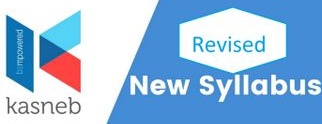Download Company law May 2017 Past Paper
Download
Company Law May 2017 Past paper
We are working to provide all the answers to the questions in this past paper. You can contribute in this forum by: posting your suggested answers and voting on the posted answers in the comment box below here.
QUESTION ONE
(a) Explain four distinctions between “co-operative societies” and “limited companies”. (4 marks)
(b) Describe three circumstances under which the veil of incorporation of a company might be lifted under case law. (6 marks)
(c) (i) Identify two instances when the High Court might rectify the register of members of a company. (2 marks)
(ii) Discuss four ways through which a person’s membership of a company might cease. (8 marks)
QUESTION TWO
(a) Ronald Dola is a director at Valleys Limited. He recently made a procurement decision that resulted in heavy losses for the company. He has also missed all the board and committee meetings that he was expected to attend. He further delegated work to his junior, Mark, who ended up making grave financial mistakes despite being the Finance Manager of the company, resulting in losses to the company.
In light of the above, analyse the duties of a director in a company and advise Valleys Limited on its legal rights, if any, against Ronald Dola. (] 0 marks)
(b) In Sharp V. Dawes, the word “meeting” means a coming together ot more than one person.
With reference to public companies, summarise five exceptions to this rule. rJp(10 marks)
QUESTION THREE
(a) In the context of corporate insolvency:
(i) Outline four grounds upon which the liquidator might resign in a members’ voluntary liquidation. (4 marks)
(ii) Explain four instances when the release of a liquidator becomes effective. (8 marks)
(b) With reference to floatation of shares, state two persons who might be held responsible for all or some part of the listing particulars in a prospectus. (2 marks)
(c) Summarise three rights of the legal mortgagee of shares. (6 marks)
QUESTION FOUR
(a) Describe three instances when an auditor of a company might not be held liable to a third party for alleged professional negligence. (6 marks)
(b) Highlight four rights of an auditor in relation to resolutions and meetings. (4 marks)
(c) In the context of debt capital:
(i) State four advantages of a trust deed. (4 marks)
(ii) Explain three instances when a floating charge is deemed to crystallise. (6 marks)
QUESTION FIVE
(a) Discuss five powers of an inspector in the investigation of a company’s affairs. (10 marks)
(b) (i)Identify four documents required to accompany the application for registration of a foreign company in your country. (4 marks)
(ii)Explain three requirements governing the name of a foreign company. (6 marks)
QUESTION SIX
(a) In the context of post-merger reorganisation:
(i) Define the term “post-merger integration”. (2 marks)
(ii) Describe four types of post-merger integration. (8 marks)
(b) Assume that you are the Management Accountant reporting to the Finance Director of a public limited company. The Finance Director recently undertook a financial review as part of the company’s strategic review process. In his report, he observed that the company has more funds than are necessary to support its planned growth and that the company’s capital should be reduced.
You are required to write a report outlining four methods which might be adopted company. (10 marks)
QUESTION SEVEN
(a) Summarise the procedure for removal of a company secretary from office. (6 marks)
(b) (i) Outline six contents of a debenture certificate. (6 marks)
(ii) Explain four rights that accrue to debenture holders. (8 marks)
Here are the Suggested Answers

